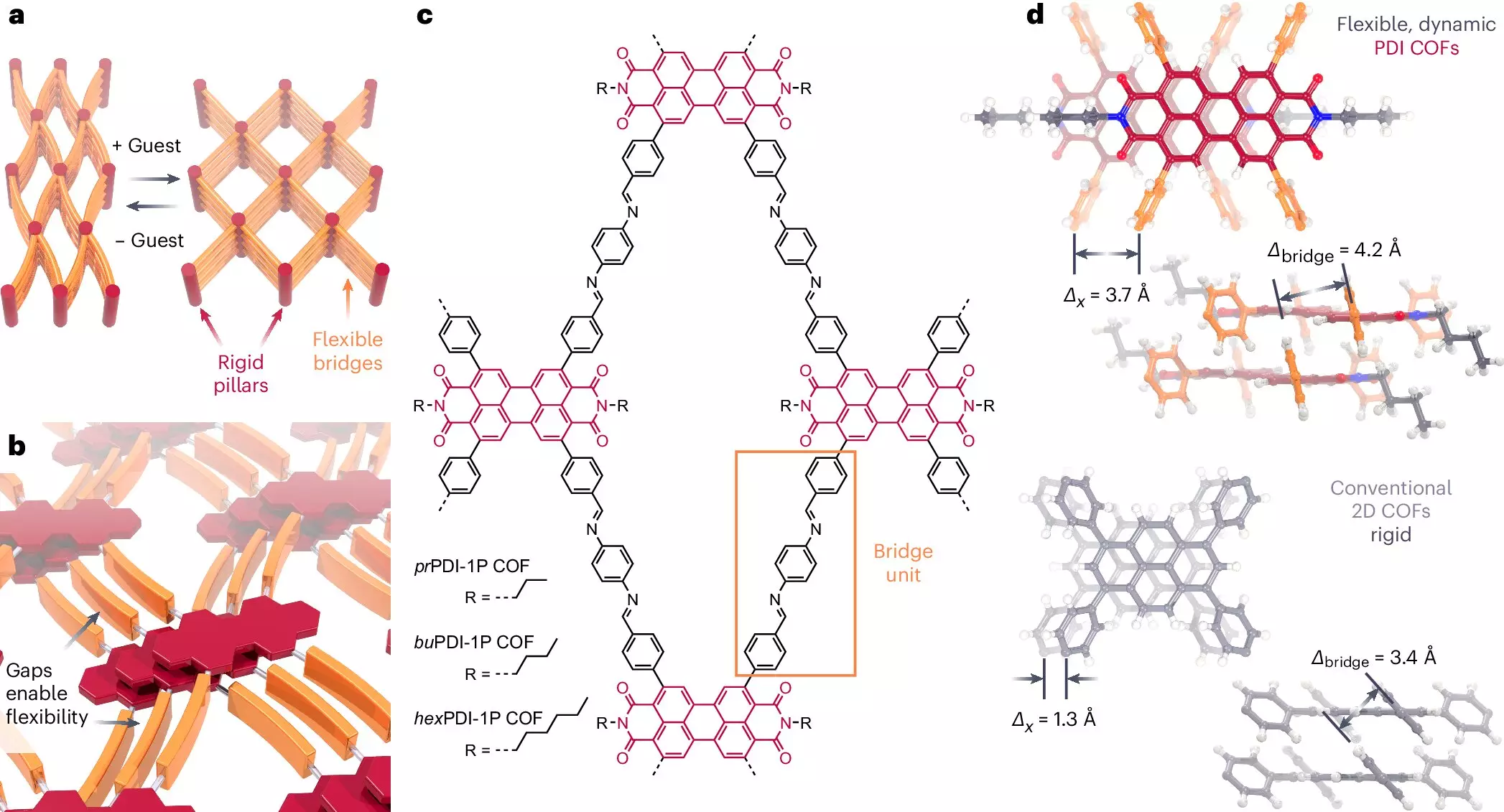In an exciting leap within the field of material science, an international research team spearheaded by Dr. Florian Auras at Dresden University of Technology has unveiled a groundbreaking development in covalent organic frameworks (COFs). While COFs are still relatively nascent within scientific research, this dynamic two-dimensional polymer represents a significant advance, particularly in the realm of controllable, reversible properties. Through their recent study published in Nature Chemistry, the researchers have taken vital steps toward achieving switchable quantum states—a feat that could redefine numerous technological applications.
Covalent organic frameworks are distinguished by their structural ordering, which allows organic molecules to bond through covalent links, forming an intricate network capable of precise functionality. While earlier explorations in this arena primarily focused on constructing rigid frameworks bearing fixed properties, Dr. Auras and his team are charting new territory. Their innovative approach not only aligns with the principles of traditional COFs but introduces the dynamic capability of adjusting structural characteristics—akin to manipulating a sponge’s pores.
The Design Innovation: Flexibility Meets Precision
What sets this research apart is the novel strategy employed to impart a degree of flexibility to these ordered yet rigid structures. The team’s inquiry centers around how modifications could induce reversible changes. As Dr. Auras aptly notes, this flexibility permits the material’s structural state to switch from dense to porous through a strategic application of solvents. This ability to alter the local geometry, alongside properties like color and fluorescence, opens a treasure trove of potential applications, particularly in electronics and energy systems.
The researchers’ findings underscore an essential trend in materials research: the transition from static to dynamic properties. By enabling materials to exhibit responsiveness to external stimuli, future applications can range from advanced sensors to more complex energy storage solutions. The materials’ tunability magnifies their relevance in the context of our rapidly evolving digital landscape, paving the way for devices that can adapt to various operational demands.
Future Implications: Beyond Conventional Limits
As Dr. Auras eloquently mentions, the manipulation of molecular structure and properties is a fascinating venture—one that carries profound implications for the future of technology. The quest for stimuli-responsive polymers, particularly in realizing switchable quantum states, hints at a future where materials can transition fluidly between functions.
This research could herald a phase where electronic devices are no longer constrained by their static attributes, thereby encouraging designs that are not only more efficient but also more sustainable. In a world increasingly dominated by the need for adaptability and performance, diving deeper into the realm of COFs provides not just theoretical insights, but a tangible pathway to innovation.
Such advancements underscore the pressing need for ongoing interdisciplinary collaboration. By fostering partnerships among chemists, engineers, and technology developers, we can unlock this material’s full potential and bridge the gap between fundamental research and practical application.

